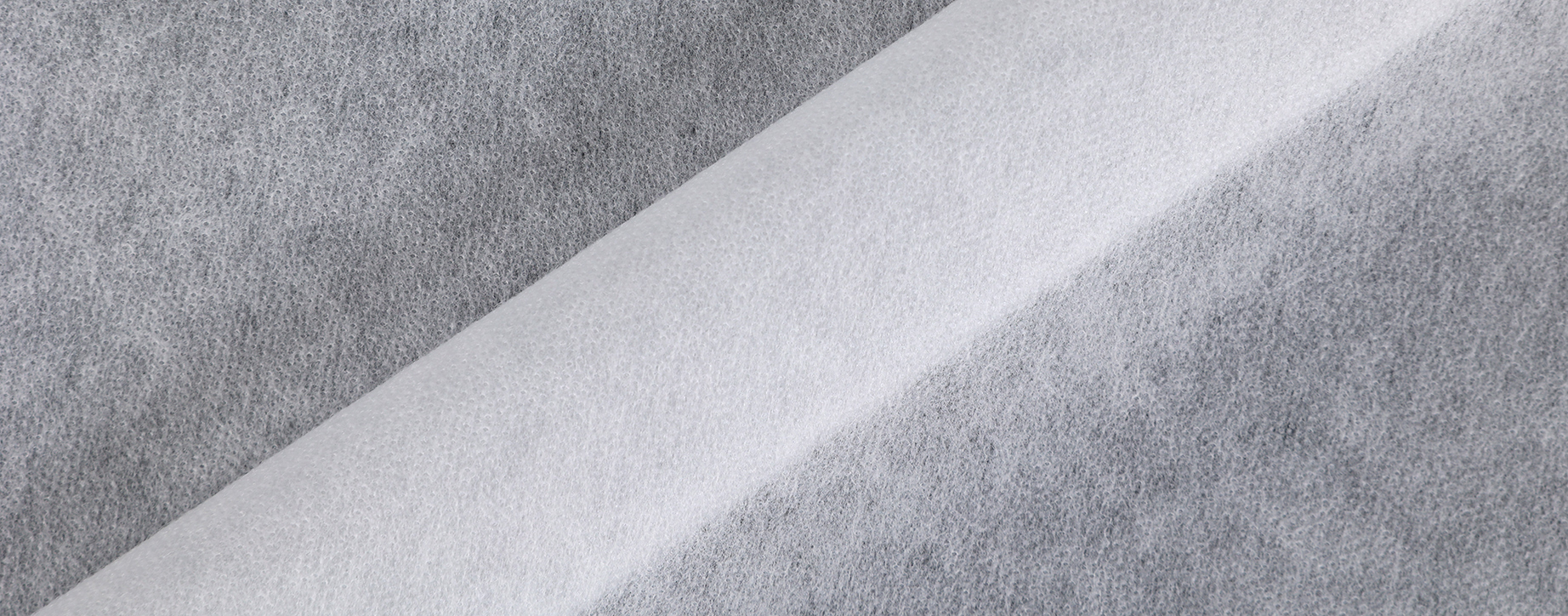Enhancing Every Garment
This series of products is made of 80% nylon short fiber +20% polyester short fiber mixed combing and hot rolling, the product has excellent hand feeling and an extremely low heat shrinkage rate.
This production adopt advanced double dot coating technique. Using high-performance PA adhesive powder.It has a good performance after dry and water washing.
It widely suits for the materials of silk, cotton, polyester cotton, polyester viscose, chemical fibers, woolen etc.
It is suitable for the front parts, collar, sleeve, waistband, placket, pocketing and reinforcement parts of casual shirts.
Horse hair suit interlining nonwoven fabric rolls for garment are engineered from a refined blend of 80% nylon short fiber and 20% polyester short fiber, carefully processed through combing and hot rolling to achieve a smooth, resilient structure with an excellent hand feel and exceptionally low heat shrinkage. This series adopts advanced double-dot coating technology with high-performance PA adhesive powder, ensuring stable bonding, clean peel strength, and reliable performance after repeated dry cleaning and water washing. Designed for versatility, it pairs seamlessly with silk, cotton, polyester-cotton, polyester-viscose, chemical fibers, and wool, maintaining garment shape without stiffness. Its balanced drape and durability make it especially suitable for front panels, collars, sleeves, waistbands, plackets, pockets, and reinforcement areas in casual shirts.
| Product | Weight (g/m2) | Width(Inch) | Composition | Coating | Powder | Screen Mesh(CP) | Fusing Condition | ||
| Temperature(℃) | Time(s) | Pressure (kg/cm2) |
|||||||
| SD8218 | 23 | 36"~80" | 80%Nylon20%Polyester | Double Dot | PA | 110 | 120~140 | 12~15 | 1.5~2.5 |
| SD8218K | 23 | 36"~80" | 80%Nylon20%Polyester | Double Dot | PA | 110 | |||
| SD8225 | 32 | 36"~80" | 80%Nylon20%Polyester | Double Dot | PA | 70 | |||
| SD8225K | 32 | 36"~80" | 80%Nylon20%Polyester | Double Dot | PA | 70 | |||
| SD8230 | 38 | 36"~80" | 80%Nylon20%Polyester | Double Dot | PA | 70 | |||
| SD8230K | 38 | 36"~80" | 80%Nylon20%Polyester | Double Dot | PA | 70 | |||
| SD8240 | 48 | 36"~80" | 80%Nylon20%Polyester | Double Dot | PA | 70 | |||
| SD8240K | 48 | 36"~80" | 80%Nylon20%Polyester | Double Dot | PA | 70 | |||
| Due to the wide variety of existing fabrics used by the clothing industry, we suggest that the test of the interlining, fabrics and the machine should be tested before using. | |||||||||
As a professional manufacturer and supplier of garment interlining materials, we proudly introduce our Horse Hair Suit Interlining Nonwoven Fabric Rolls for Garments. This product is developed with advanced nonwoven technology and carefully selected fiber blends to meet the high standards of modern garment manufacturing, especially for structured and semi-structured apparel.
Horse hair suit interlining nonwoven fabric rolls are primarily used as supporting and shaping materials inside garments.
All specifications can be adjusted to meet specific design and production needs.
Temperature: Adjust according to fabric type
Pressure: Even and moderate
Time: Typically 10–15 seconds
Proper testing on sample fabrics is advised before bulk production to fine-tune fusing parameters.
They are compatible with fabrics such as silk, cotton, polyester-cotton, polyester-viscose, chemical fibers, and wool.
Customers seeking stable quality, excellent shaping performance, and reliable after-care durability will find this interlining an excellent solution.
By combining advanced nonwoven technology, high-quality fiber blends, and proven adhesive systems, our Horse Hair Suit Interlining Nonwoven Fabric Rolls for Garments deliver superior structure, durability, and versatility—making them a dependable choice for modern garment production.
Thank you for your interest in our products and services. We welcome inquiries from partners, customers, and industry professionals worldwide. Whether you need product information, technical support, samples, or a customized solution, our team is here to assist you.
For product details, quotations, technical specifications, or cooperation opportunities, please contact our sales team. We are happy to provide professional advice and tailored solutions based on your specific requirements.
